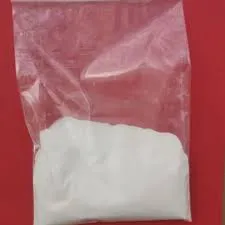Sodium Thiocyanate An Overview
Sodium thiocyanate (NaSCN) is a white crystalline compound that plays significant roles in various industrial applications and chemical processes. Recognized for its versatility, sodium thiocyanate is commonly utilized in agricultural, pharmaceutical, and chemical sectors, exhibiting properties that make it an essential compound in numerous formulations.
Chemical Properties and Structure
Sodium thiocyanate consists of a sodium cation (Na⁺) and a thiocyanate anion (SCN⁻). The thiocyanate ion comprises a sulfur atom (S) bonded to a carbon atom (C) that, in turn, is triple-bonded to a nitrogen atom (N). The compound is highly soluble in water, which facilitates its use in various aqueous solutions. Sodium thiocyanate is stable under standard conditions and has a moderate melting point of approximately 287 °C.
Industrial Applications
1. Agriculture Sodium thiocyanate is utilized in agriculture as a source of sulfur. It can be applied to enhance soil quality and increase crop yield, as sulfur is an essential nutrient for plants. The compound also plays a role in controlling certain pests and diseases in crops.
2. Pharmaceuticals In the pharmaceutical industry, sodium thiocyanate is employed as an analytical reagent. It is used in the analysis of other compounds, particularly in the detection of heavy metals. Additionally, it has applications in the synthesis of various pharmaceutical products, including certain medications targeted at managing conditions like hypertension and thyroid disorders.
thiocyanate sodium

3. Array of Chemical Reactions Sodium thiocyanate serves as a reagent in several organic reactions. It is particularly notable in the preparation of thiocyanate derivatives, which are important intermediates in the synthesis of pharmaceuticals and agrochemicals. Moreover, sodium thiocyanate is used in the production of thiocyanate esters, which are valuable in organic synthesis.
4. Metal Extraction In the mining industry, sodium thiocyanate is involved in the extraction of metals, particularly in the recovery of gold and other precious metals from ores. The compound helps in forming complexes with metal ions, facilitating their separation and recovery processes.
5. Photography Historically, sodium thiocyanate has been used in photographic processes, serving as a fixing agent. It aids in stabilizing the developed image on photographic film, ensuring that photographs maintain their quality over time.
Safety and Handling
While sodium thiocyanate is generally regarded as safe for use in various applications, proper handling and safety precautions are essential. It can be harmful if ingested or inhaled, leading to potential health risks. Exposure to high concentrations may result in symptoms such as nausea, headaches, and in extreme cases, more severe conditions. Hence, individuals handling the substance should wear appropriate protective gear, including gloves and masks, to minimize exposure.
Conclusion
In summary, sodium thiocyanate is a multifunctional compound with a wide array of applications in agriculture, pharmaceuticals, and chemical industries. Its properties allow it to serve as a crucial reagent and effector in numerous chemical processes, contributing to advancements and efficiencies in various sectors. As industries continue to evolve, the relevance of sodium thiocyanate is likely to grow, making it a compound worthy of ongoing research and attention. With the right precautions, its benefits can be harnessed effectively to support sustainable practices across different fields.

